Modelsvit 1/48 scale
North American F-82G
Twin Mustang
by Roland Sachsenhofer
|
North American F-82G Twin Mustang |

Are there "bi-fuselages" as well as bi-planes?
No, this linguistically unattractive term has not become established in the history of aviation; it is more commonly referred to as a "twin". These designs are rare in the colourful history of aviation: as far as I know, only the He-111Z "twin" and the F-82 Twin Mustang shown here were built in significant numbers. Among the better-known projects that were not built, but were worked through to feasibility, is certainly another German design of the 1940s, the BF 109Z.
The F-82 Twin Mustang
The development work on the F-82 actually ran surprisingly parallel to this Bf 109Z: in October 1943, North American started the first design studies for a new type of long-range escort fighter, which was primarily intended to provide fighter protection for the long-range B 29 bombers. At this point it was already clear that the new design would only be an interim solution until the introduction of the new turbine fighters, but it was also clear that, in addition to the promise of superior propulsion performance, the jet engine would continue to be characterised by a significant disadvantage for some time: the turbine's great thirst for fuel. One would still have to wait some time for an operational jet for several hours of long mission flights - this was to be bridged with a Twin Mustang.
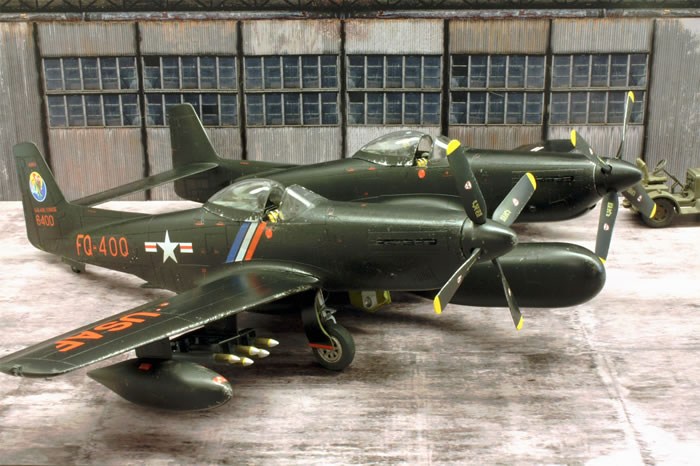
The first flight of the XF-82 took place on 26 June 1945, before the surrender of Japan. However, the end of the war itself caused interest in the new long-range fighter to wane quickly, so that the history of the twin-fuselage Mustang seemed to have come to an end with the construction of a total of three prototypes and around 20 aircraft in the first series.
However, the project was soon to be given a new lease of life. Once again, it was the call for an interim solution that pushed the Twin Mustang forward: not only was there a delay in the introduction of long-range fighters, but the thirsty turbine engine was also causing headaches for the radar-equipped night and all-weather fighters.
The development of the planned successor to the P-61 Black Widow, the Northrop F-89 Scorpion, was delayed and by the end of the 1940s seemed far from being ready for series production or even for troop deployment. Northrop itself announced the F-89 for 1952 at the earliest. The situation was aggravated by the fact that the P-61 was the only all-weather fighter equipped with on-board radar. However, its performance potential was exhausted, and it was rightly considered obsolete by the end of the 1940s. Thus, the P-61 Black Widow continued to be used for the sole reason that no replacement was available.
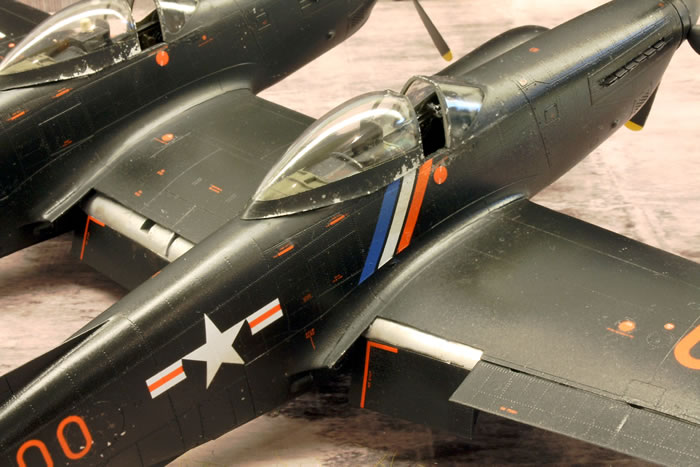
Against this background, it was obvious to utilise the unused potential of the Twin Mustang with its outstanding range and impressive firepower and to convert it into a night fighter. On this basis, two new series were created: the F-82F was equipped with the AN/APG-28 radar, while the F-82G used the more powerful SCR-720C18. Previously, the Twin Mustang B and E series were equipped with dual controls for both cockpits, but now the aircraft was flown by the pilot in the left cockpit, while the radar officer was seated in the right fuselage. The radar unit itself was housed in a remarkable torpedo-shaped extension. If the already spectacular double-fuselage F-82 had wanted to increase its show value even more: with this impressive piston it had succeeded!
The F-82's operational history, which began in 1946, was short, but the 270 or so Twin Mustangs built in those seven years were still relatively widespread. The impressive twin-fuselage aircraft were used by the Strategic Air Command in their original role as long-range escort fighters, as well as flown by Air Defence Command units. Here the F-82F and G all-weather fighters equipped with on-board radar were used. By 1952 at the latest, however, both ADC and SAC had removed all F-82s from their inventories; the era of the gap filler was finally over with the dawn of the jet age.
A look at its performance, however, quickly makes it clear that the F-82 Twin Mustang was anything but a "lame duck". Above all, the range was impressive: the twin-engined aircraft could cover more than 3600 kilometres, carrying 1800kg of external loads in addition to its six 12.7mm Browning M3 machine guns. With a maximum take-off mass of 11,632 kg, the F-82G, powered by two counter-rotating 1660 hp Allison V-1710 engines, reached a top speed of 742 km/h.
The Twin Mustang's actual combat mission came on the other side of the globe. When the Korean War began in 1950 with the Communist North invading the South, the F-82Gs of the Far East Air Forces were the first aircraft to fly live missions. First from their bases in the Japanese south, Itazuke and Misawa, later also from bases in Korea itself. It was also an F-82G that scored the first kill of the UN Air Force. On 27 June 50, an aircraft of the 339th Fighter All Weather Squadron (F(AW)S) shot down a North Korean Jak-11. Possibly three more aerial victories were achieved in the course of the conflict; however, the sources are not clear here, so that only this one documented aerial victory can be assumed. In the following missions against various ground targets, about 20 more enemy aircraft were destroyed on the ground. On the loss side this was countered by 22 Twin Mustangs, half of which were lost in combat missions.
My model shows this F-82G /FQ-400, one of those aircraft used in Korea. Flown by Colonel John Sharpe, it was part of the 4th FS, a unit that flew its missions from Naha AB on Okinawa at the beginning of the Korean War.
During 1951, the F-82 All-Weather Fighter Korea was replaced by its successors, mostly the F-94 Starfire. The remaining aircraft were returned to the Air Defence Command and, after being converted for use in cold environments, spent the rest of their time serving ADC units in Alaska. By 1957 at the latest, time had run out for the last remaining Twin Mustangs.
Release and in the Box
Immediately after the announcement of a completely new F-82 Twin Mustang by the Ukrainian manufacturer Modelsvit, not only was my joy great, but also the decision was made to try out the new moulds on the workbench as soon as possible. What smiled at you when you opened the sturdy box inspired both my joy and the decision to build!
Modelsvit doesn't give itself anything here, because the partial interior of the two cockpits, the moulding of the landing gear legs and the four wheel wells as well as other regions such as those of the exhaust ports, the external loads or the interior of the SCR-720C18 radar pod are moulded with remarkable joy in detail.
This is all the more welcome as these detailings are intended for areas that will remain visible even after completion. This is motivating, as the modeller should not expect a quick build here. Especially when building the cockpits, work should be done without time pressure, as here, in addition to the complex construction, the correct version must also be observed: Modelsvit has included the parts for the G and the F versions in the kit, which also differed in the equipment of the cockpits.
Assembly
The accuracy of fit proved to be pleasingly good after the start of construction; an impression that continued until the completion of the large assemblies and their arrangement into a quite stable, unusually "square" appearing construction.
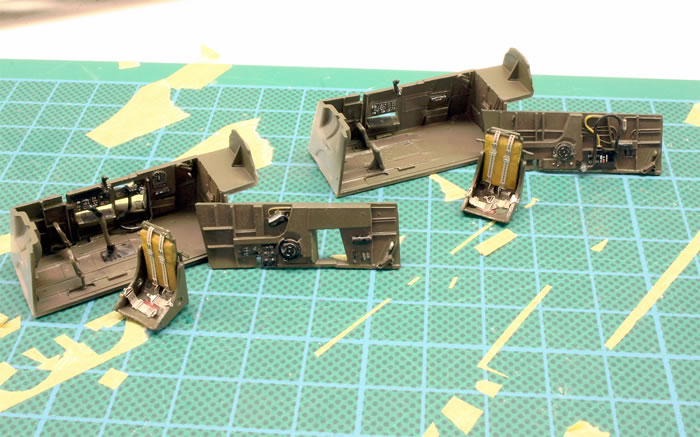
Then, however, things started to get a bit tedious.
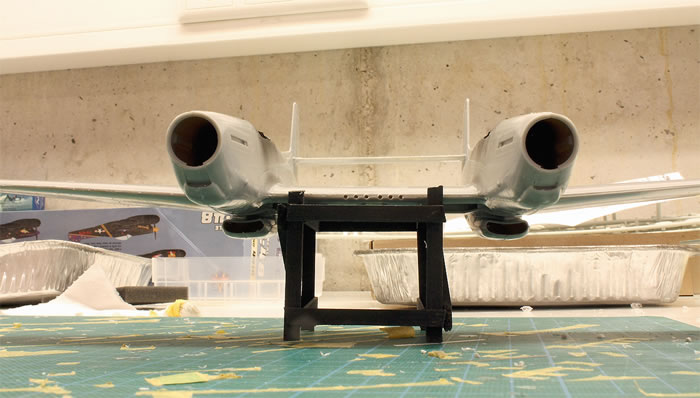
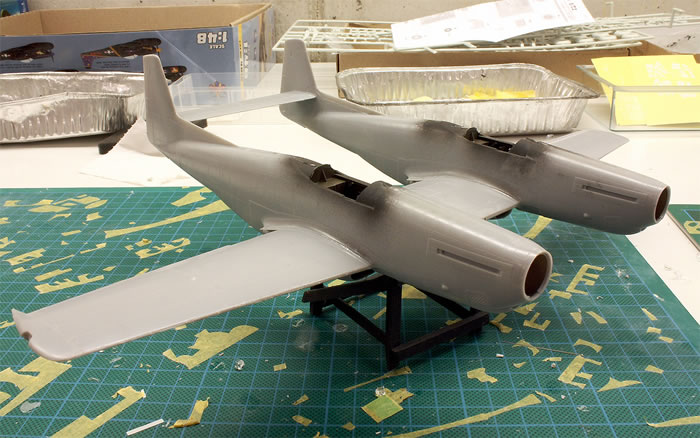
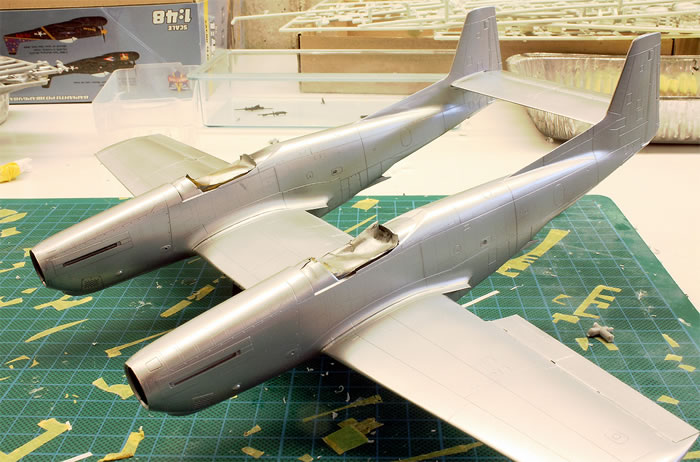
This was mainly due to the installation of the cockpit clear parts: if the front parts of the cockpit could be adapted to the fuselage contours with just sanding, then sandpaper and even the modelling knife had to surrender at the rear cockpit area, which is shown open.
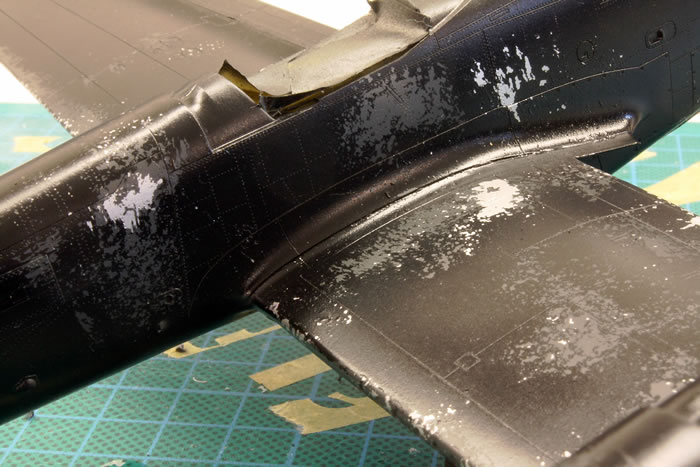
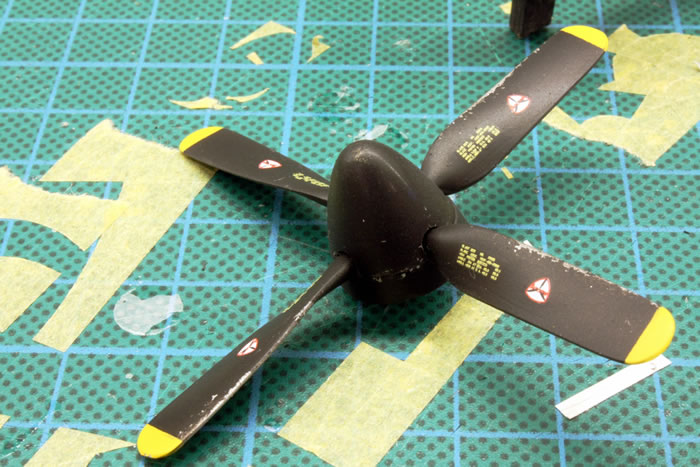
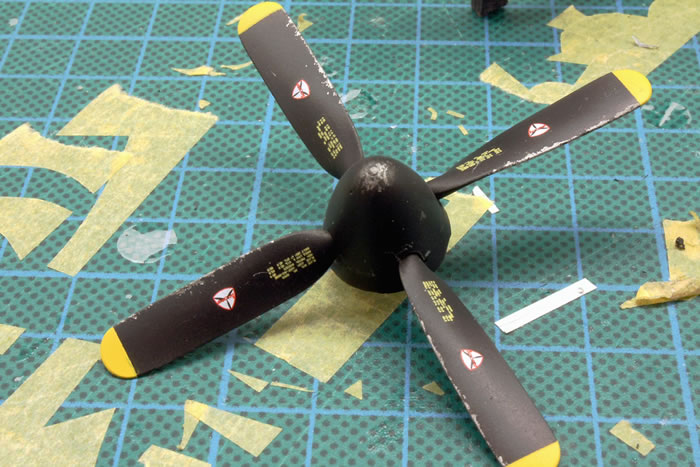
In the original, the cockpit canopy sits completely flat on the back of the fuselage, but if one were to trust the fit of the kit parts as specified by Modelsvit, one would end up with a Twin Mustang with the ends of the sliding canopy projecting steeply into the air. So something had to be done about this. Since sanding was not enough, a part of the fuselage back was removed with a scalpel. The result is not completely harmonious, but I can live with the corrected appearance with a clear conscience.
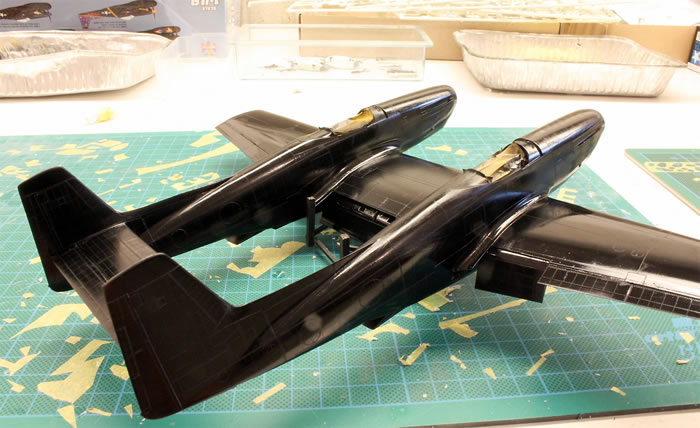
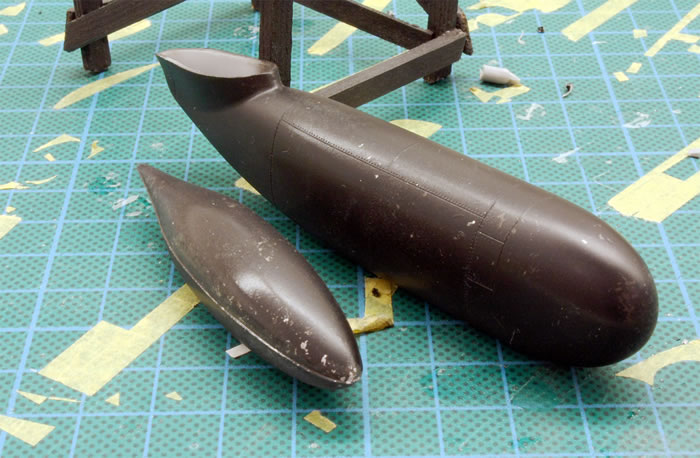
Another difficulty arose in the following, for which Modelsvit is not responsible: when choosing the depicted aircraft, I used the decal sheet "Twin Mustangs" from Printscale. Unfortunately, its markings are bordering hard on unusable. Above all they seem to be out of scale! The list of defects includes the following points: "Stars and Bars" definitely too big, the lettering "Call Girl" too wide, furthermore the three-coloured stripe below the outer sides of the cockpits is basically wrong and not defined in length. To cut a long story short: I only used what was absolutely necessary, everything else was taken from the beautiful kit decal sheet or, like the stripe markings on the sides of this commander's aircraft, masked off and painted.
Those who have read this far will probably agree with my conclusion: this long-awaited kit can be recommended with minor reservations and will give pleasure to all those modellers who have always wanted to admire a coherent F-82 Twin Mustang in 48 scale!
If you are interested in the building process, please have a look here on Scalemates:
https://www.scalemates.com/profiles/mate.php?id=10148&p=albums&album=88113
As ever, remarks will be appreciated:
ro.sachsenhofer@gmx.at
Model, Images and Text Copyright ©
2022 by Roland Sachsenhofer
Page Created 8 December, 2022
Last Updated
8 December, 2022
Back to HyperScale Main Page

|
Home
| What's New | Features | Gallery | Reviews | Reference | Resource Guides | Forum |